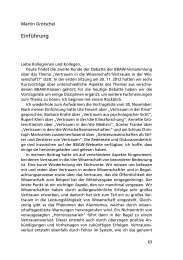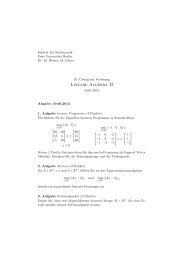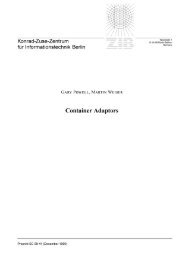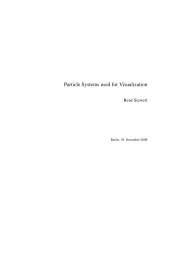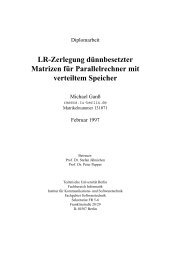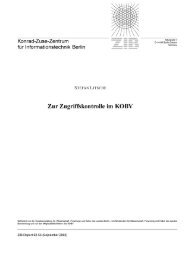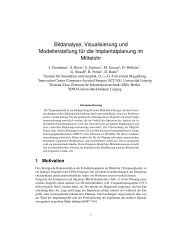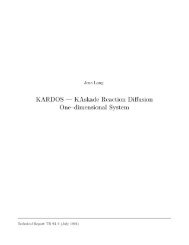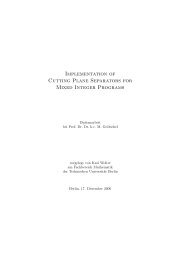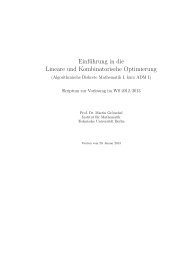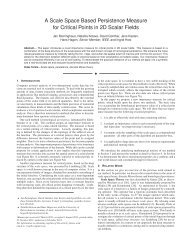SC-90-09.pdf - ZIB
SC-90-09.pdf - ZIB
SC-90-09.pdf - ZIB
Create successful ePaper yourself
Turn your PDF publications into a flip-book with our unique Google optimized e-Paper software.
and by using property C 0 we obtain<br />
Denote the Kantorovitch quantity by<br />
From (2.18) and (2.22), it follows that<br />
«i = KII = IK--'i«l 0 such<br />
that h) < 1/2 for j > j*. It follows that<br />
°° a*<br />
Pi ••= «i E(^) 2 ' -1 < TZT7 < 2«* < 2^,- .<br />
«=o<br />
l<br />
Now, applying Theorem 1.5 to Newton's process (2.3) with starting point x'j, we<br />
deduce the existence of a solution x*- € S'j(njX*, p*-) which is the unique solution<br />
of (2.1) in the region<br />
"•j<br />
oo<br />
D*=[jS j (x k j,2/u j )nD.<br />
Jt=0<br />
In particular x^ is the unique solution of (2.1) in the region (2.21).<br />
Next consider Newton's process (2.3) with some starting point x° 6 Dj and let<br />
aj(x'j) be given by<br />
«;(*") == m^^n • ( 2 -23)<br />
if<br />
M*J) = a i (xJ)a; i /2 < 1 (2.24)<br />
then we may define<br />
oo<br />
«(*?):= 2ME[M*J)] a '- ( 2 - 25 )<br />
t'=0<br />
If besides (2.24) we also have<br />
M x M*ty cD *<br />
(2 - 26)<br />
then according to Theorem 1.5 and Lemma 2.1 the sequence {x^}^L Q given<br />
by (2.3) will converge to a solution of the equation (2.1). In general it may<br />
converge to a solution that is different from the solution x'j whose existence<br />
12<br />
•



